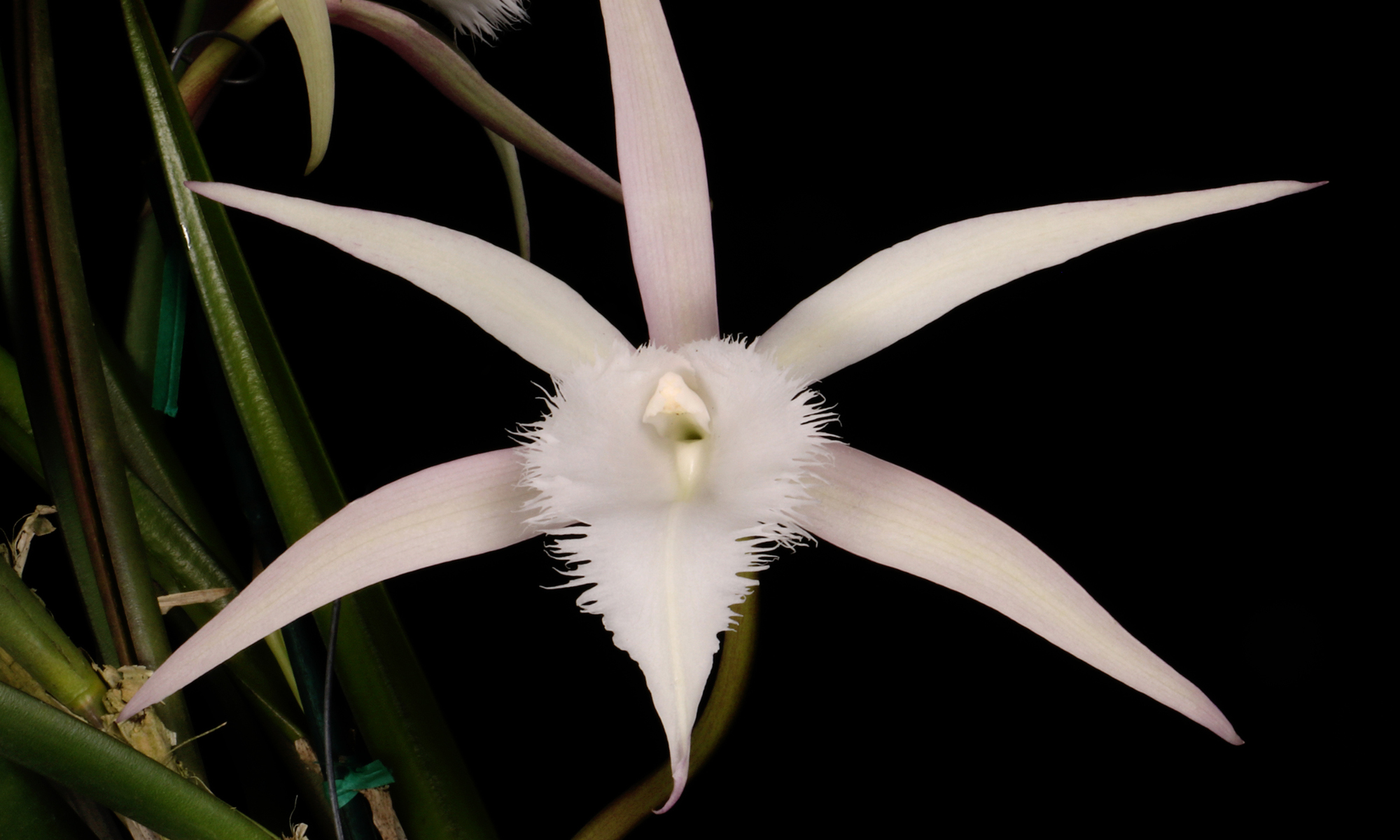Our August speaker was John Odom from Odom’s Orchids who presented How we grow Cattleyas. The presentation provided both scientific and cultural perspective on the genus.
John Odom studied genetics for his Masters in college under a distinguished professor who won the nobel peace prize and has been growing orchids for the last 43 plus years. He has had the good fortune of knowing some of the most well known orchid hybridizers and acquired several specimens from them. At one time he has had over 5000 awarded orchids and has grown as many as half a million phalaenopsis. Odom’s Orchids is one of the largest Cattleya growers in the world.
Cattleya’s originate from Central and South America from where they were sent to England and named after Sir William Cattley. Known as the corsage orchid, there are over 50 species in the wild and are recognizable easily. Cattleya’s are hardy orchids which are epiphytes in nature and therefore need good air movement. Cattleya’s are able to grow in temperatures as varied as from 40-100 degrees. Though they can tolerate such extremes, they should not remain at these temperatures. They need bright, indirect light such as a screen enclosure or tree canopy coverage with up to 40%-50% shade. If enough light is not provided they can get very green and not bloom. In optimal conditions the leaves should be a medium green color. The roots of Cattleyas are spongy and have water retention ability. The plant should be watered as a whole and not just the roots. Once a week watering can be sufficient. Pay attention to the kind of pot the plant is in since plastic pots retain more moisture and clay pots dry faster. Cattleyas themselves do not have any preference for either pots or mediums they are grown in.
Humidity between 50% and 80% should be provided. This is by wetting the greenhouse floor. Inside the house, they can be placed on a tray of gravel with water added just up to below the surface of the gravel. In Florida, extra humidity does not need to be provided and as the plants are epiphytic, they prefer to grow outside.
Cattleya’s can be fed every week, bi-weekly or monthly. The fertilization should be done on a regular basis. If the planted in a bark mix, a high nitrogen formula such as 30x10x10 is advised. This is because the fungus breaking down the bark feed on nitrogen and therefore the plants do not get as much nitrogen as needed. A high phosphorus formulation (bloom boosters) may be used every 4-6 weeks. John uses a regimen of various protein based fertilizers as well as additives such as Epsom Salt. He constantly experiments to see what works best for orchids and finds that a heavy feeding tends to work best. He uses an injection watering system with a chlorine and sulfuric acid additive to keep the irrigation lines clean, the pH manageable, calcium bicarbonate low and orchids clean. John also prefers to use harpin based fertilizers. Harpin is a protein which activates the plant to grow better.When harpin is prayed into the foliage and stems of an orchid, the receptors recognize the proteins presence and send a signal through the plant that activates the plants natural ability to protect itself. Hence the stimulated plant has more vigor and stamina. Research has shown harpin has multiple effects on different types of plants. In some cases it enhances plant growth. In other cases it increases disease and insect resistance.
According to John, some of the common causes of orchid death are over watering, lack of attention, other orchids took priority, job restraints, lack of fertilizer and chemical control for insects, lack of light when greenhouse roof needed replacing, having too many orchids and not admitting to it. Some of the reasons NOT to let orchids die is that most old plants are not replaceable and they have disappeared. Such plants could have been lost due to virus infections, natural disasters such as hurricanes or benalate issues. Benalate was a fungicide manufactured by Dupont and then eventually manufactured by another company. An accidental herbicide mix in the formula caused several well-known collections to be decimated with specimens lost forever.
===announcement===
Our August speaker will be John Odom from Odom’s Orchids which has over 90,000 square feet of greenhouses and one of the largest mail order orchid company in the US. They are located in Ft. Pierce, FL. The topic will be How we grow Cattleya Orchids. This presentation will divulge information on cultural and other needs of Cattleya’s.
John Odom was born in Fort Pierce, Fl. After graduating from the University of Florida, John worked in the citrus industry and later retired from Ocean Spray Cranberries. He started his commercial orchid nursery over 45 years ago and still maintains it.
